13 Surprising Artifacts Found in the Titanic Wreckage
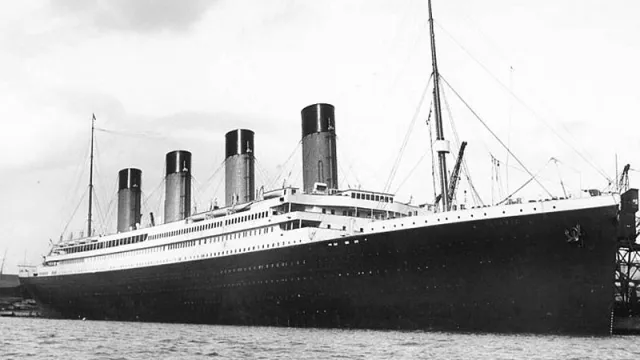
Though the RMS Titanic sank on April 14, 1912, the remains of the doomed ship weren’t discovered until 1985 on the bottom of the ocean floor off the coast of Newfoundland, Canada. And while much of the ship had naturally perished sitting under the sea for decades, divers were still able to rescue and preserve plenty of amazing items. Wonder what surprising artifacts survived the Titanic wreckage? Keep reading for a list of the most surprising items.
READ THIS NEXT: 19th Century Underwater Hospital and Cemetery Discovered at Florida National Park.
13 Surprising Titanic Artifacts
1. The violin played as the ship sank

While an old violin being found among the wreckage of the Titanic isn’t necessarily shocking, its backstory is.
According to CNN, the decaying violin was the very one that bandleader Wallace Hartley used to play “Nearer, My God, to Thee” as the ship sank.
“In 2006, the damaged violin was found in the attic of a home in Britain. It was authenticated through testing of salt water deposits, according to a statement released by Henry Aldridge and Son, which hosted the auction in Wiltshire, England. The violin was adorned with an engraved silver plate that connected it to Hartley,” CNN explained.
It sold for $1.7 million during a U.K. auction in 2013, the highest amount ever paid for a Titanic artifact.
2. Perfume oils
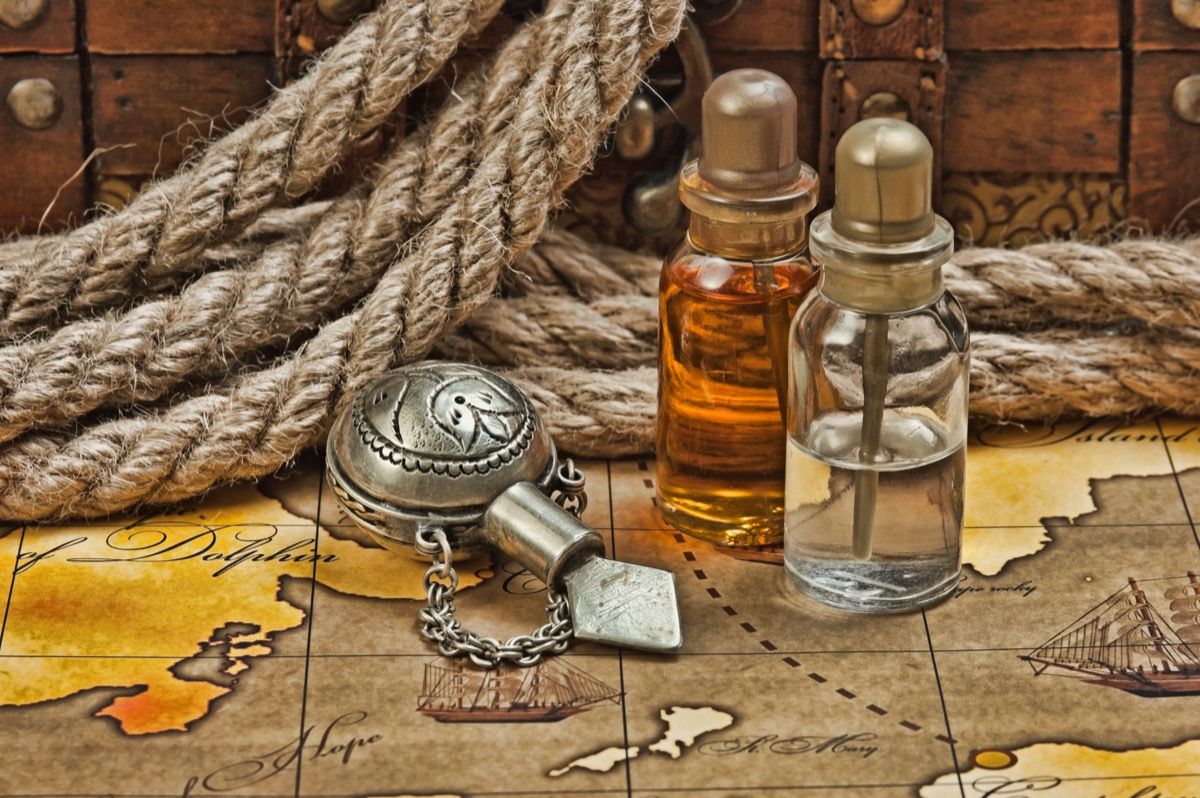
When German-born chemist Adolphe Saalfeld boarded the Titanic, he did so with a satchel full of various perfume bottle samples—all of which were found in the ship’s wreckage. Saalfeld, a first-class passenger, had intended to open his own fragrance shop in America—a dream he sadly never realized.
In an Instagram post, Titanic: The Artifact Exhibition shared a photo of these glass vials, which, unbelievably, “still emitted the scents of the oils they contained when examined after recovery.”
“Each glass vial contained one scent, identified by a label attached to the vial. The glass was in turn encased in a metal cylinder which was then stored in a small leather portfolio. The natural oils of rose, lavender, bergamot, and other botanicals were to be blended into perfumes. The hand-written labels here are for Floral Otto of Lily of the Valley, Floral Otto W, and Thyme Red,” they share.
3. A pair of gloves

A battered pair of white cotton gloves was one of the artifacts found in the Titanic wreckage, and they have since been dubbed some of the “rarest Titanic artifacts ever recovered,” according to USA Today.
The gloves have been put on display in various Titanic exhibitions since they were found, but in 2016, they were returned to a conservation facility for permanent retirement.
4. A menu of the ship’s last meal

A menu of the last meal served on the Titanic to first-class passengers was auctioned off in 2012, selling for $83,000, according to the BBC.
The meal was served the same day the ship crashed into the glacier, and it featured several courses including “eggs Argenteuil, consomme fermier, and chicken a la Maryland.”
“What we have to consider is that the Titanic was regarded as the finest restaurant afloat and this does illustrate that point,” Andrew Aldridge auctioneer at Henry Aldridge & Son Ltd, told the BBC. “There are over 40 different options for one lunch.”
READ THIS NEXT: 67 Weird Facts So Strange, You Won’t Believe They’re True.
5. Sheet music played by ill-fated musicians

Despite being submerged in the ocean for 73 years, divers recovered a piece of sheet music for the song “Put Your Arms Around Me, Honey” from the 1910 Broadway production of Madame Sherry. It was played by the doomed musicians on the sinking ship, according to the Dothan Eagle.
Since being discovered, the artifact has been on display at several Titanic exhibits.
6. Letters written on Titanic stationery
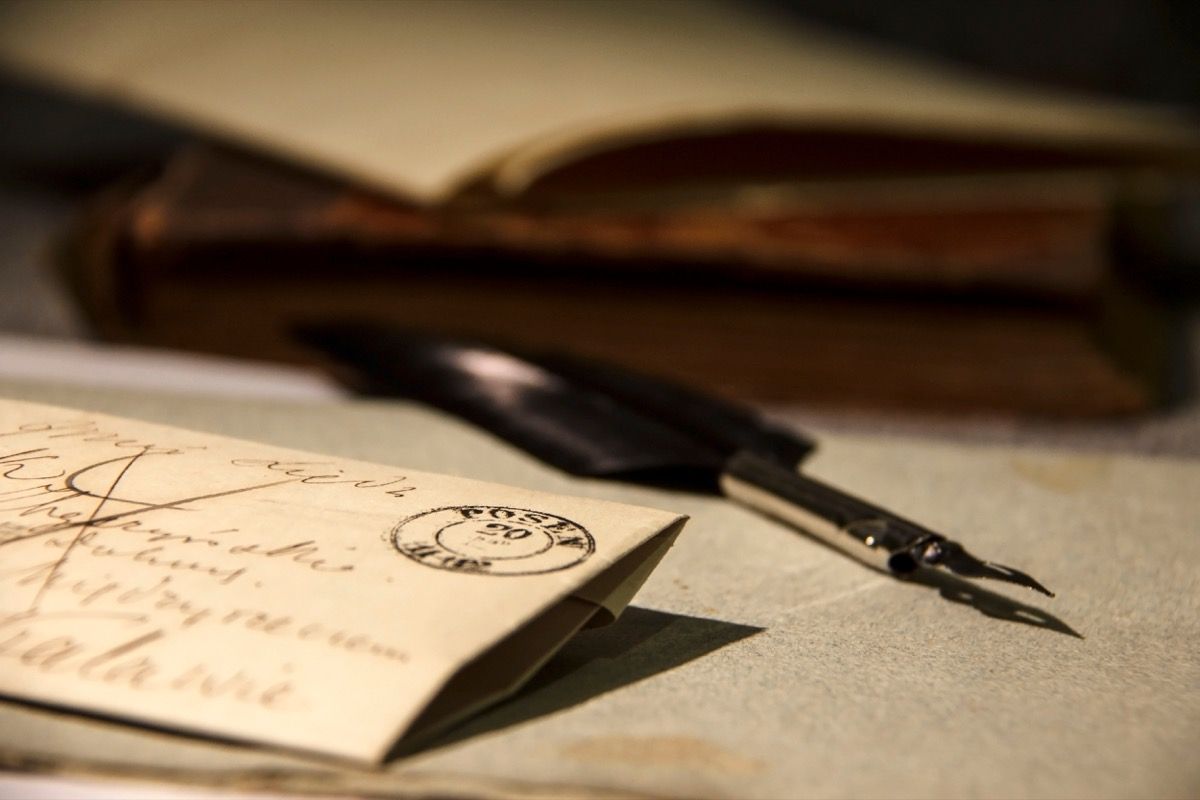
Also surviving the wreckage was a letter penned by first-class passenger Oskar Holverson. Written to his mother the day before the ship sank, the letter was found folded up in a notebook in Holverson’s pocket.
“It is the only letter written on Titanic stationery to have actually survived going into the North Atlantic,” Aldridge told History.com, as was reported by Elite Daily.
In 2017, the auction house sold the Titanic artifact for $166,000.
Another letter found from the ship sold for a hefty sum—about $200,000, reported NPR in 2014.
It was written on April 12, the day of the sinking, “by Essex-born Esther Hart and her seven-year-old daughter Eva,” shared Titanic Belfast. It was addressed to Esther’s mother in Chadwell Heath.
Both Esther and Eva survived the disaster, but “the letter only survived because it was in the pocket of her husband’s coat which he had given her to keep warm,” Titanic Belfast explained. Her husband, sadly, perished.
7. A pocket watch stuck at the time the ship sank

The pocket watch of one of the ship’s victims was another artifact found in the Titanic wreckage. As reported by The Telegraph, the rusty watch was owned by passenger John Chapman, who was traveling with his wife Lizzie.
What makes this so unique is the fact that it’s literally frozen in time. The watch is stuck at 1:45 a.m., which is around the time the ship became submerged underwater.
8. A fur coat worn by a stewardess who survived the shipwreck

A floor-length beaver fur coat found in the Titanic wreckage was worn by first-class stewardess Mabel Bennett, who, according to The Telegraph, was given the coat to wear after she was found waiting for a lifeboat clad in only a nightgown.
As one of the only fully intact pieces of clothing to survive the shipwreck, it sold at auction for around $165,000 in 2017.
Bennett, who was 33 when the ship sank, survived that night. She later died at 96 in 1974, making her the longest-living female member of the Titanic crew.
RELATED: For more up-to-date information, sign up for our daily newsletter.
9. A bronze cherub from the grand staircase’s upper landing
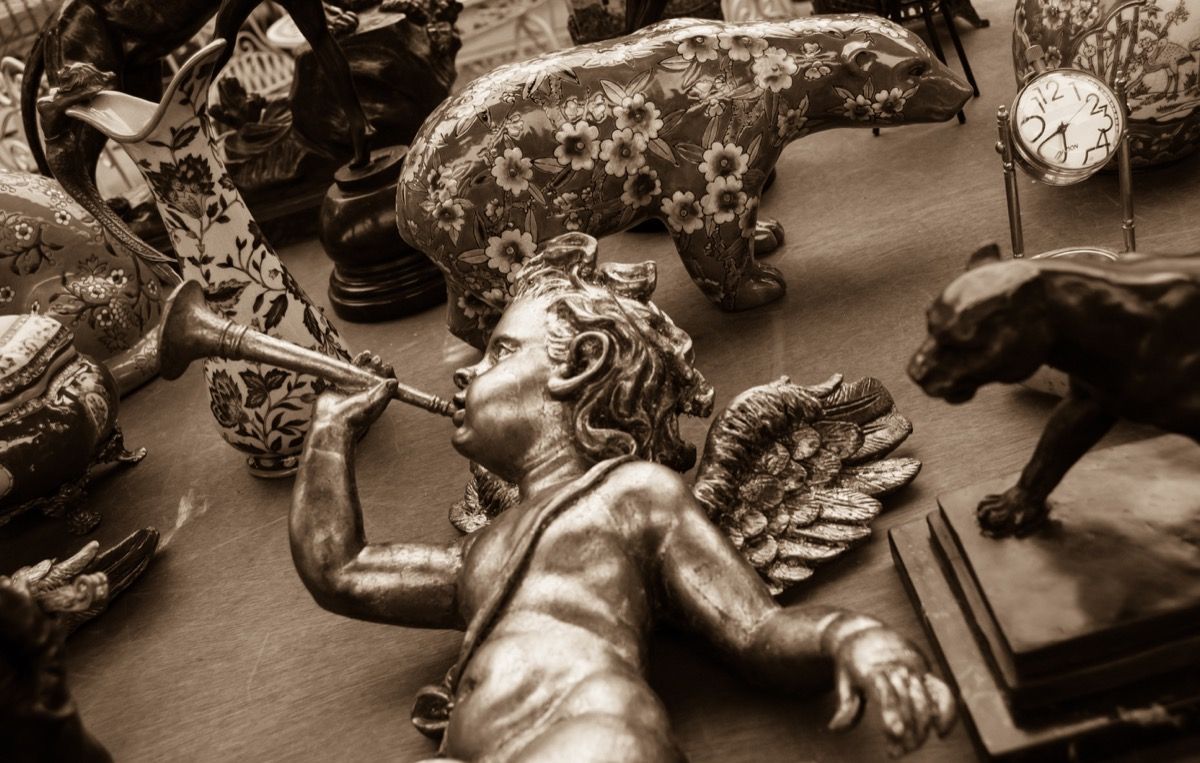
One bronze cherub statue, a decoration from the upper landing of the Titanic’s grand staircase, was also recovered in 1985. However, the statue is missing its left foot.
“There is speculation that people began to panic as the water came in, and someone may have grabbed onto the base of the cherub as the water began to fill the room,” explained historian Andre Nolan in an article for Titanic Universe. “One foot of the bronze cherub was attached to the base, and the fact someone may have grabbed onto it might be what caused it to come loose from the base.”
10. Keys used to access lifeboat lanterns

The keys recovered from the wreckage aren’t just any old keys. They were used by crewman Samuel Hemming during the sinking of the ship to unlock a door, behind which a stock of lifeboat lanterns were waiting.
“The keys themselves played a part in the story as they were actually used in those last desperate hours,” Aldridge told The Irish Times. “This is because Mr. Hemming received a personal order from Captain Edward J. Smith as the ship was sinking and it became apparent all was lost to ensure all of the lifeboats were provided with lamps.”
11. A bracelet engraved with the name of a third-class passenger
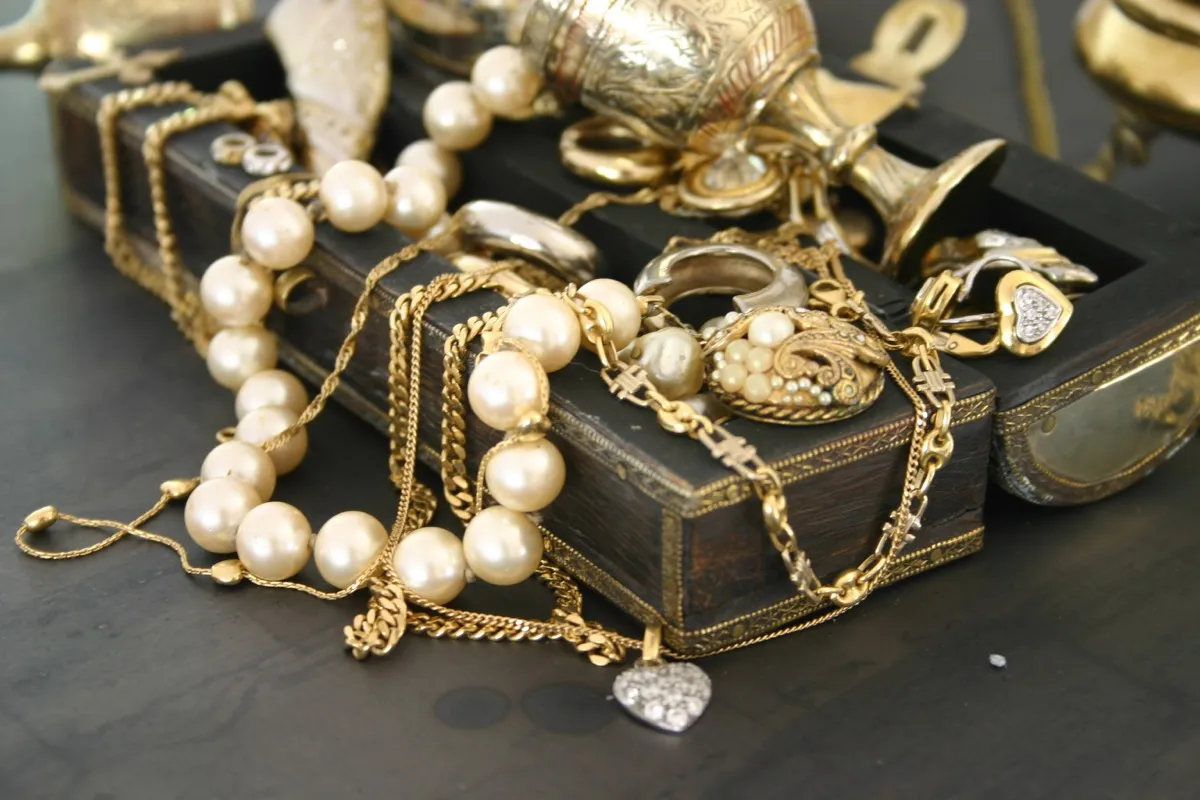
Out of the wreckage of the Titanic also came a woman’s 15-karat rose gold and silver bracelet with the name “Amy” encrusted in diamonds.
In her 1998 book Titanic: Women and Children First, Judith Geller, former director of merchandising for the Titanic exhibition, suggests that it might have belonged to Amy Stanley, a third-class passenger and one of the only Amys on board.
12. A whistle belonging to a hero officer

Harold Lowe was a fifth officer on the Titanic who “commanded Titanic’s lifeboat 14 and retrieved survivors from the icy waters,” according to Fox News. In the movie adaptation, he was portrayed by Welsh actor Ioan Gruffudd.
Among Lowe’s possessions that were retrieved was a whistle engraved with “Lieut. H.G. Lowe RNR” (Royal Naval Reserve). He was one of four officers to survive the disaster.
13. The “world’s most valuable biscuit”
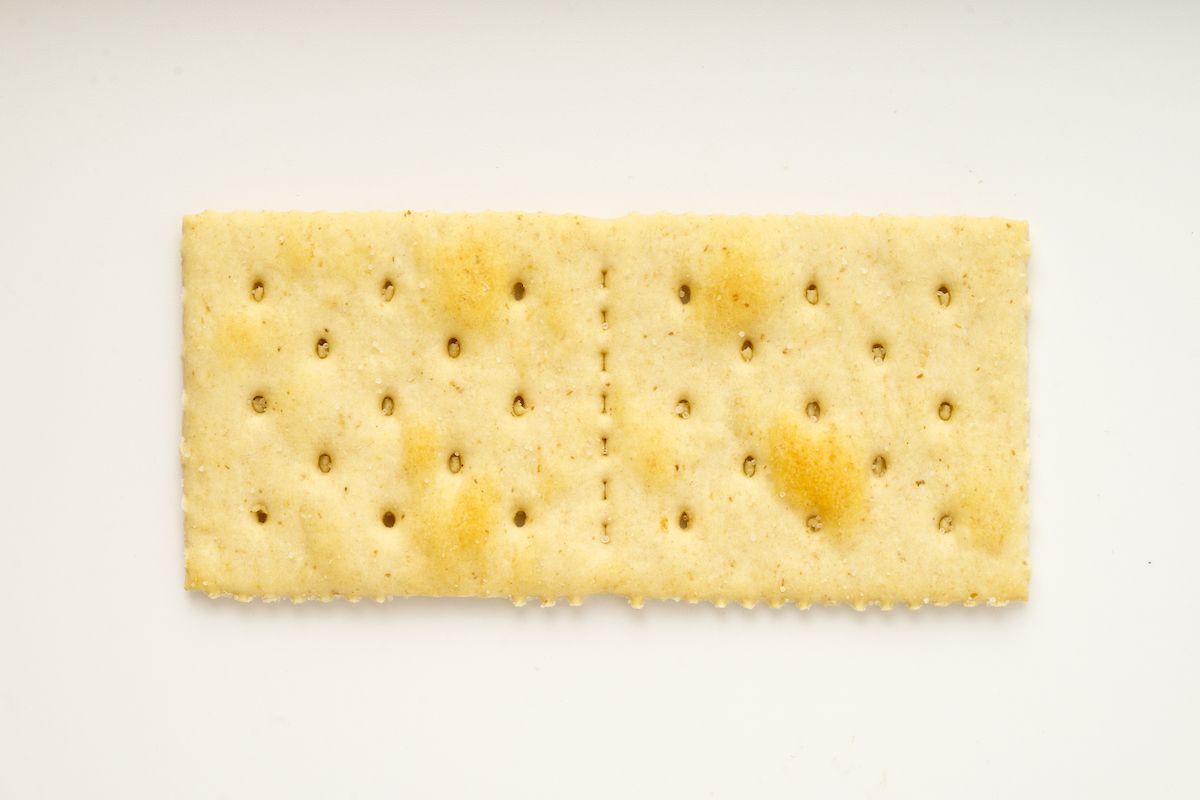
When it sold for $23,000 in 2015, Aldridge called the Spillers and Bakers Pilot cracker “the world’s most valuable biscuit.”
The cracker was part of a survival kit and was “saved by James Fenwick, a passenger on the Carpathia which picked up Titanic survivors,” reported the BBC. “He kept it in an envelope complete with original notation, ‘Pilot biscuit from Titanic lifeboat April 1912.'”